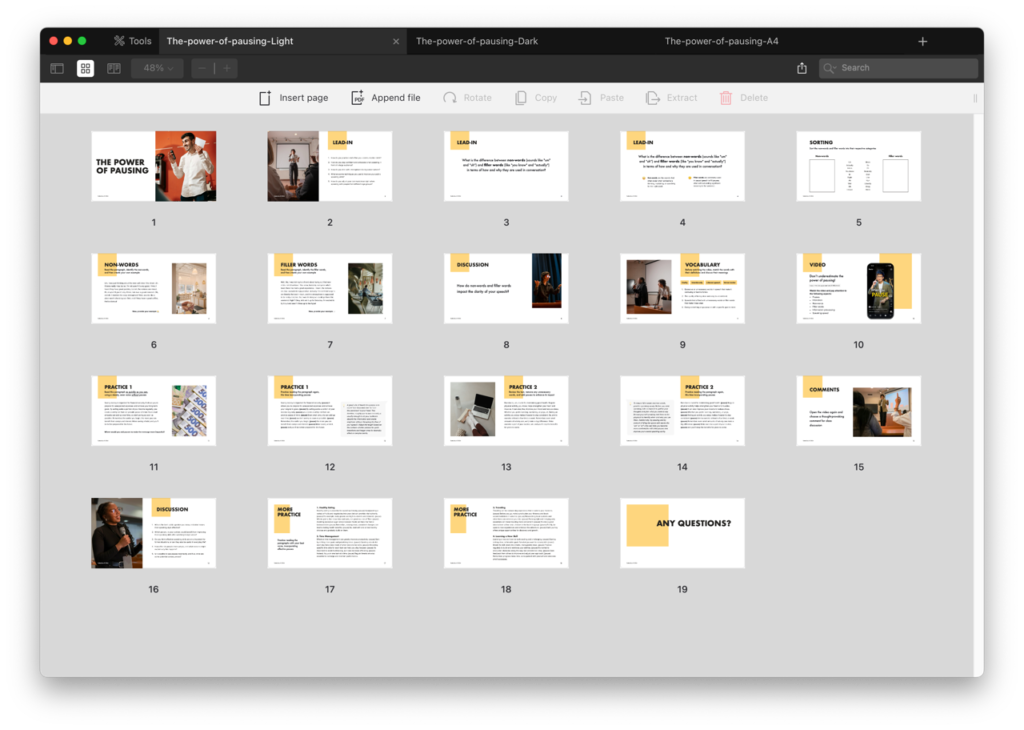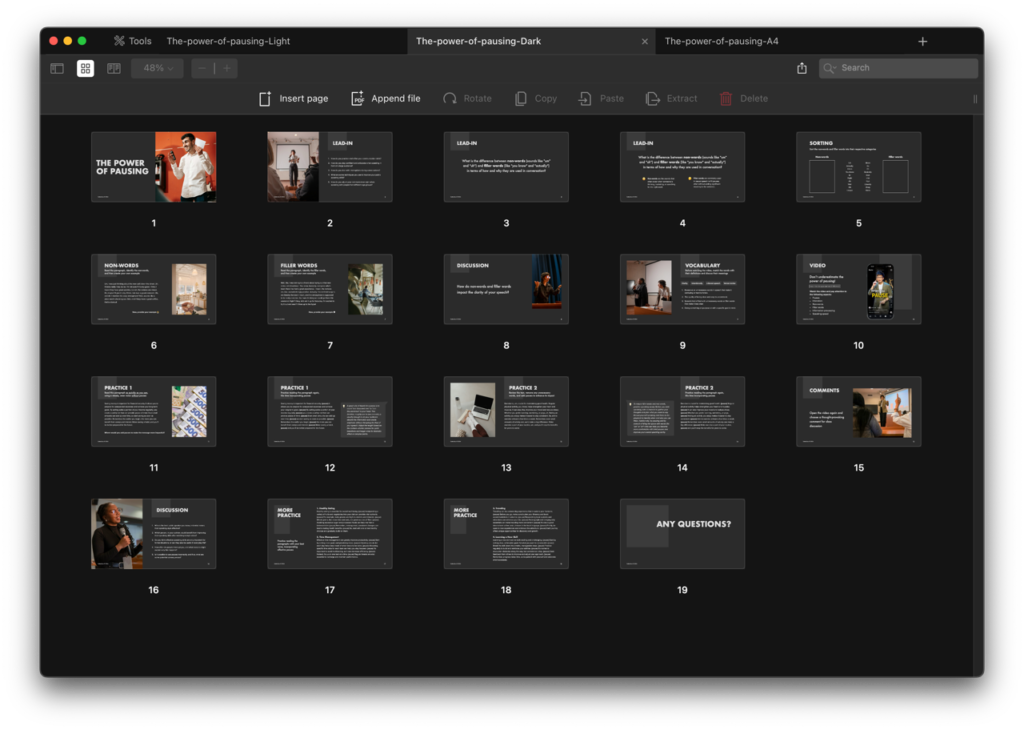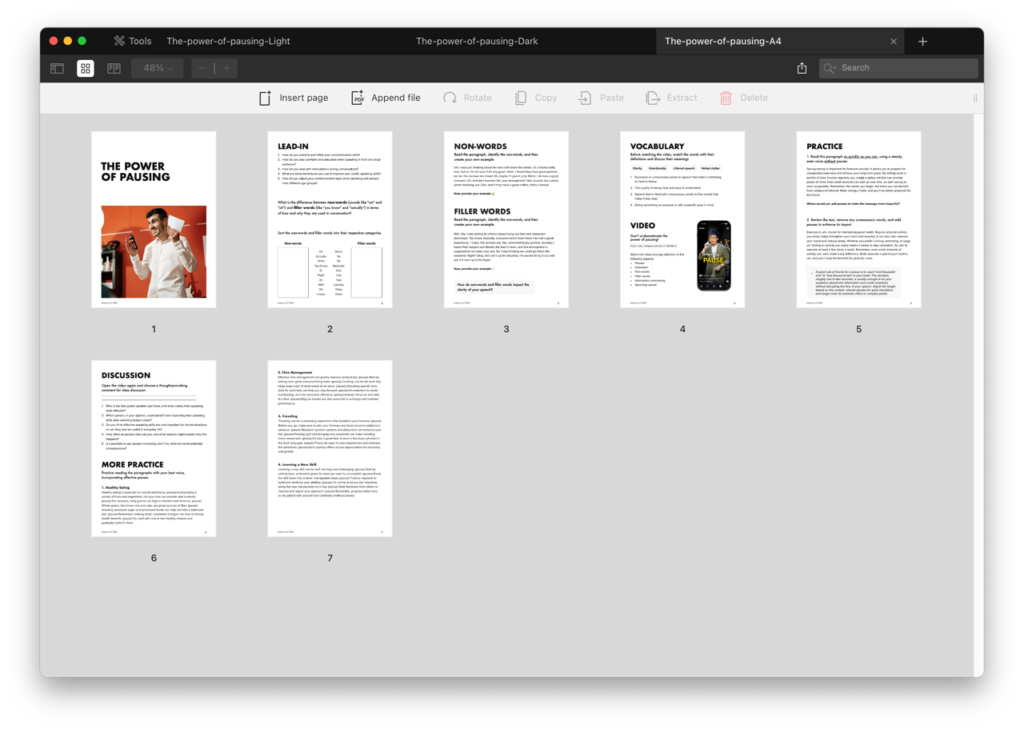The Power of Pausing

This B2 level ESL lesson explores the power of pausing in speech. Based on a video, students will learn how effective pauses can enhance communication by emphasizing key points, improving clarity, and maintaining listener engagement. The lesson includes activities to practice incorporating pauses naturally and understanding their impact on spoken language.
| Type | Level | Vocabulary | Video length | Lesson Time |
| Regular Lesson | B2 / Upper-Intermediate | 4 words | 1:23 min | 60 min |



Vocabulary
- Clarity
- Intentionally
- Littered speech
- Verbal clutter
Contents
- Lead-in
- Non-words and Filler words
- Sorting
- Reading – Non-words
- Reading – Filler words
- Discussion
- Vocabulary
- Video
- Practice 1
- Practice 2
- Comments
- Discussion
- More practice
Lead-in, Non-words, Filler words, Sorting
This B2 upper-intermediate ESL lesson begins with five lead-in questions that prompt students to discuss key communication skills, such as staying confident during public speaking, handling interruptions, and sharing techniques for effective public speaking. Next, students explore a page that distinguishes between non-words and filler words, with a brief description provided to clarify these concepts. The final activity in this section involves sorting 20 non-words and filler words into their respective categories. You can also encourage students to come up with additional examples if needed.
Reading, Discussion
On the next page, students will focus on non-words. They will read a paragraph, identify the non-words, discuss their usage, and then create their own examples using non-words. The same approach is applied to filler words: students read a paragraph, identify the filler words, and generate their own examples. Additionally, there is a discussion task asking students how non-words and filler words impact the clarity of our speech.
Vocabulary, Video, Practice
This lesson focuses on a few key vocabulary terms from the video: clarity, intentionality, littered speech, and verbal clutter. Students will match these terms with their definitions and discuss their meanings before watching the video. Afterwards, students will watch a short Instagram video titled “Don’t Underestimate the Power of Pausing.” They need to pay close attention to various aspects, including the use of pauses, non-words, filler words, information processing, and the speaking speed.
After watching the video, students will work through practice pages designed to enhance their understanding of pauses and vocal delivery. On the first practice page, students read a paragraph as quickly as possible using a steady, flat, even voice without pauses. This exercise demonstrates the impact of using pauses and how it affects clarity. Next, students are tasked with introducing pauses into a short paragraph. A suggested answer is provided, offering guidelines on how to use pauses effectively in public speaking to deliver information more powerfully. Ensure students have ample time and opportunities to practice reading this paragraph out loud. Then, students read a text and remove any unnecessary words, then reintroduce pauses to improve its impact. This page includes a suggested answer with additional tips on reducing filler words and non-words in spoken English.
Comments, Discussion
On the comments page, students need to revisit the Instagram video they watched earlier. They should open the video, scroll through the comments section, and select the most interesting or thought-provoking comment for class discussion. Following this, there is a discussion page with five questions. These questions cover topics such as identifying the best speaker they know, which person in their social circle could benefit from improved speaking skills after watching the video, strategies for handling interruptions, and whether it is possible to use pauses incorrectly.
More practice
The final two pages feature four short paragraphs on everyday topics such as healthy eating, time management, traveling, and learning new skills. Students are tasked with practicing these paragraphs, focusing on using their best voice and incorporating effective pauses. It’s up to the teacher to decide how to use these pages. Options include assigning them as homework, having students memorize and present the paragraphs aloud in class, or providing feedback to classmates. There are various ways the teacher can utilize these pages to enhance speaking skills and practice effective communication.



